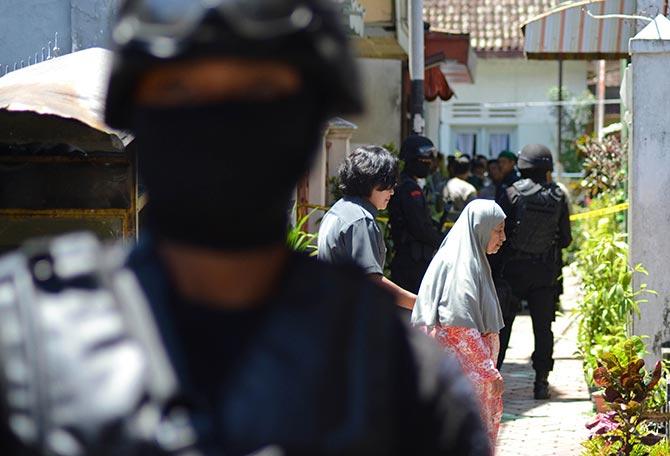
The threat to Indonesia from supporters of the organization known as the Islamic State of Iraq and Greater Syria (ISIS), or simply the Islamic State (IS), is real – but it should not be overblown.
The dangers are threefold. First, many of the Indonesian fighters now with ISIS could eventually return home and revitalize terrorist groups that at the moment lack skills and leadership. Second, ISIS supporters unable to leave for Syria could decide to undertake violent acts in Indonesia as a way of demonstrating their loyalty. Finally, ISIS teachings that promote violence against those labeled as nonbelievers, apostates and heretics could gain more traction, particularly among student groups. The last may prove to be the most serious problem and the most difficult to address.
Indonesia’s foreign fighters
All countries with foreign fighters in Syria are worried about what happens when they return home. Indonesia may have less to fear in this regard than many other countries because of several factors. First, the numbers going are lower. With perhaps 300 nationals in Syria, Indonesia has 1.2 fighters abroad per one million population, as opposed to Belgium with 40, Denmark with 27, France with 18 – let alone Tunisia with 280. With a stable, democratic government, an absence of conflict, the ability to openly advocate for the application of Islamic law, no persecution of Muslim activists, few immigrant ties to the region and no hostile neighbors, there is less reason for Indonesians to leave for Syria than for nationals of many other countries.
A quick note on numbers: Indonesia’s National Counterterrorism Agency (Badan Nasional Penanggulangan Terorisme, or BNPT) has repeatedly used a figure of 500 fighters, and some careless academics have put the figure even higher. The most reliable data comes from the national police’s counterterrorism unit, Detachment 88, which as of early June had documented 202 individuals in Syria. That, however, does not include nearly 40 believed to have been killed since last March. We know the figure of 202 is low because more people have gone than have been identified by name. At the same time, information from new arrests has significantly improved the accuracy of police data, so the true number is not likely to be too much higher. The figures of 500 and more tend to include everyone who has gone back and forth to Syria on humanitarian missions linked to Islamist organizations and simply are not accurate estimates of fighters.
- Meeting the hype: Will Indonesia be the next digital powerhouse?
- Promoting public health: Can fiscal policy play a role?
- Political party financing in Indonesia is a recipe for corruption
- Asean's sustainable future? Science and technology
- Spying, refugees and executions: Inside the Indonesian and Australian media







%20resized.png)
